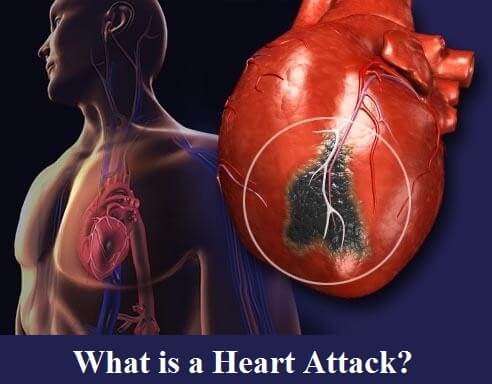The heart attack is the death or necrosis of a tissue or organ that does not receive an adequate supply of blood and oxygen from the arterial circulation dedicated to them. When an arterial vessel does not have a good flow or is unable to increase it according to the needs, tissue ischemia occurs downstream of the vessel and, if the ischemia is sufficiently prolonged to cause necrosis, the infarct itself.

The best hospital for heart in India at Medanta – The Medicity in Gurgaon offers complete treatment of all types of cardiovascular problems.
Table of Contents
What are the characteristics of the heart attack?
Although the infarction may occur in many parts of the human body, this term is more commonly referred to as the cardiac infarction, which affects the muscle tissue of the heart or myocardium. The necrosis of the infarcted tissue, if the event has not had a fatal outcome, is repaired through a healing process. In this way, the concerned organ loses a part of its functionality.
The most frequent forms of heart attacks are –
- Myocardial infarction
- Cerebral infarction
- Intestinal infarction
- Pulmonary infarction
What are the causes of heart failure?
The most common cause of heart infarction is the atherosclerotic disease of the arteries that carry blood to the heart and brain. Atherosclerosis affects the inner layers of the vascular walls and is characterized by the formation of lesions or plaques rich in fat (cholesterol), wall cells undergoing proliferation and inflammatory cells.
The atherosclerotic plaques, which can be localized or diffuse, often determine the narrowing of the lumen of the vessel and are complicated by the formation of a clot on their surface. This can produce the sudden occlusion of the vessel itself, resulting in prolonged ischemia and infarction of downstream tissues.
What is cardiac arrest?
The causes at the origin of cardiac arrest can be multiple, including the heart attack, as happens when the damaged tissue is so large that the heart stops working, or if during the heart attack, cardiac arrhythmias take over, which stop the heart.
The malfunction of the electrical system of the heart is called arrhythmia. Arrhythmias are very common, and they are usually benign and do not cause any serious problems to the heart.
However, there is a particularly severe arrhythmia, the ventricular fibrillation, in which the electrical activity of the heart is so uncoordinated that it is not able to generate any contraction.
Other causes may include severe myocarditis.
Treatment
What to do in case of cardiac arrest? What to do in the event of a heart attack?
- In the event of cardiac arrest, it is essential to intervene as quickly as possible through cardiac massage and the immediate use of a defibrillator.
- In the event of a heart attack, on arrival at the Emergency Room, the most effective procedure is angioplasty, which involves reopening the closed cardiac vessel.
For those suffering from a cardiac or infarction or arrest, hospital treatment at the best hospital for heart in India is followed by the continuation of medical treatment at home and by a strong recommendation to correct the modifiable cardiovascular risk factors. Guidance is provided on lifestyle and nutrition adjustments, and such variations can significantly contribute to the prevention of a second episode.
Best preventive therapy for heart disease recurrence is an exercise
Regular physical activity can help to change more than one cardiovascular risk factor positively. Exercise helps, in fact, to lose the extra pounds, fighting the overweight enemy of heart health, but not only. Physical activity also helps to lower blood pressure and reduce the risk of diabetes significantly. Last but not least, staying active can help improve blood cholesterol concentrations. In particular, regular exercise can increase HDL cholesterol levels, considered “good” because by acting like a real sweeper it carries excess cholesterol into the liver, through which it is at least partially eliminated by the body.
Furthermore, those who have already had a heart attack or angioplasty should not forget that these positive effects are accompanied by other positive effects. In fact, staying physically active allows muscle tissue to make better use of oxygen, promotes an increase in the diameter of the coronary arteries and leads to the formation of new arterioles and new capillaries at the heart muscle level. Besides, exercise reduces the risk of arrhythmias and the creation of dangerous blood clots.